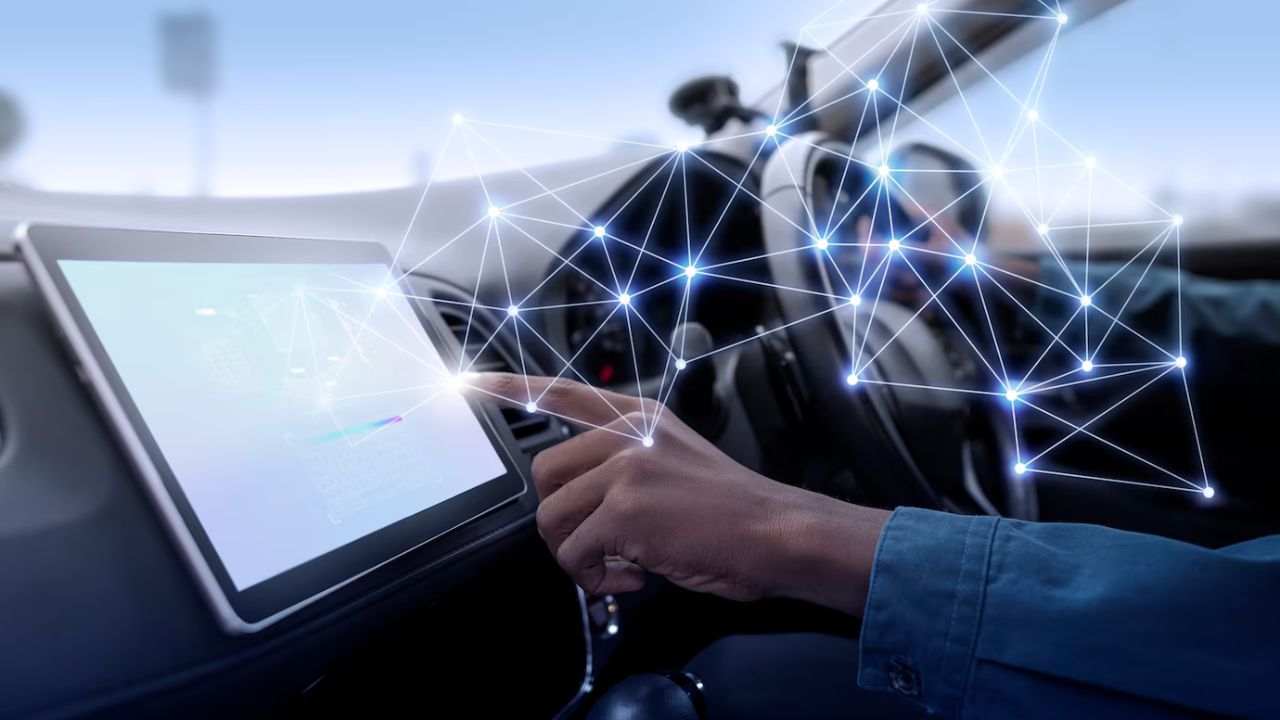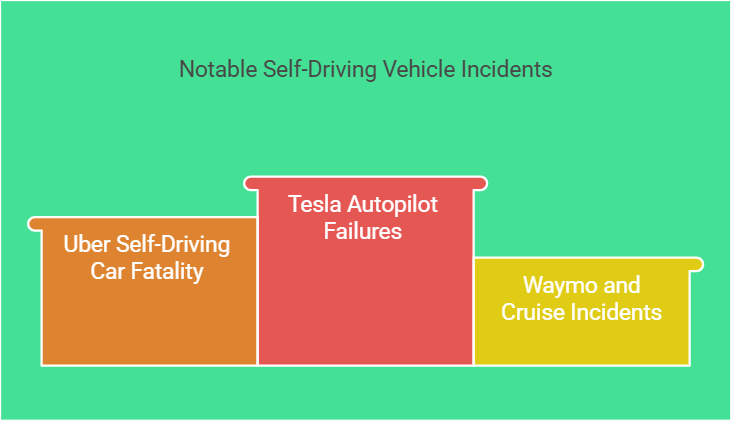Self-driving technology promises to revolutionize how we drive, offering features that enhance safety, reduce human error, and improve traffic efficiency. Automakers claim that autonomous features, such as adaptive cruise control, lane-keeping assistance, and automatic braking, help prevent crashes caused by distracted driving, speeding, or delayed reactions. However, as more vehicles incorporate self-driving capabilities, concerns are rising over whether these systems make roads safer or introduce new risks.
Some reports suggest that autonomous features prevent accidents, but others indicate that self-driving technology may contribute to crashes in ways drivers don’t expect. As software-driven vehicles take on more responsibility, glitches, misreadings, and driver overreliance could lead to more collisions rather than reducing them.
How Self-Driving Features Aim to Prevent Accidents
The foundation of self-driving technology relies on advanced sensors, artificial intelligence, and real-time data processing to assist or replace human decision-making. Key features designed to improve safety include:
- Adaptive Cruise Control (ACC) – Automatically adjusts speed to maintain a safe distance from other vehicles.
- Lane-Keeping Assistance (LKA) – Prevents unintentional drifting by gently steering the vehicle within lane markings.
- Automatic Emergency Braking (AEB) – Detects obstacles and applies the brakes if a collision appears imminent.
- Blind Spot Monitoring (BSM) – Warns drivers when a vehicle approaches from an unseen angle.
When working properly, these systems can prevent common accidents, such as rear-end collisions, lane-drift crashes, and sudden braking incidents. However, the effectiveness of these technologies depends on accuracy, reliability, and driver awareness, and that’s where problems arise.
Are Self-Driving Features Increasing the Risk of Accidents?
While self-driving technology is designed to prevent crashes, data suggests that autonomous and semi-autonomous vehicles are involved in an increasing number of accidents. According to reports from the National Highway Traffic Safety Administration (NHTSA), some self-driving features may be responsible for unexpected vehicle behaviors that lead to collisions.
Key issues include:
- Phantom Braking – Some autonomous systems detect non-existent obstacles and suddenly brake, leading to rear-end crashes.
- Failure to Detect Stationary Objects – Certain systems struggle with recognizing parked cars, road debris, or stopped emergency vehicles.
- Misinterpretation of Traffic Signals – AI-driven vehicles have misread traffic lights or ignored stop signs, increasing the risk of intersection accidents.
- Delayed Human Intervention – Overreliance on automation can cause drivers to respond too late when a system fails, leading to more severe accidents.
Self-driving technology removes some human errors but introduces new risks, making it essential for drivers to remain actively engaged, even when these systems are in use.
Notable Crashes Involving Self-Driving Vehicles
Despite being marketed as a safer alternative to human driving, self-driving technology has been linked to multiple high-profile crashes.
- Tesla Autopilot Failures – Tesla’s driver-assist system has been involved in dozens of crashes, including fatal accidents where the vehicle failed to recognize obstacles or disengage properly.
- Uber Self-Driving Car Fatality (2018) – An autonomous Uber vehicle struck and killed a pedestrian in Arizona, failing to detect the individual due to a software error.
- Waymo and Cruise Autonomous Incidents – Fully self-driving taxis have caused traffic disruptions, misjudged road conditions, and ignored emergency responders, leading to safety concerns in urban areas.
These incidents highlight the limitations of self-driving technology and reinforce that autonomous systems are not yet a fully reliable replacement for human decision-making.
Are Human Drivers Still Safer Than Autonomous Systems?
Self-driving technology aims to eliminate human error, which causes most road accidents. However, real-world driving requires judgment, adaptability, and split-second decision-making, which AI systems still struggle with.
While autonomous features excel at following programmed rules, human drivers can:
- Anticipate unexpected behaviors from other motorists and pedestrians.
- React more naturally to road hazards that AI may misinterpret.
- Adapt to extreme weather conditions, where self-driving sensors often fail.
Until self-driving systems reach human-level decision-making capabilities, a well-trained, focused driver remains the safest operator on the road.
Can Self-Driving Vehicles Be Held Legally Responsible for Accidents?
Determining liability in crashes involving self-driving technology is a growing legal challenge. Unlike traditional accidents where human error is the main factor, autonomous crashes involve multiple possible responsible parties:
- The Driver – If the system required human intervention and the driver failed to respond, they may be held responsible.
- The Vehicle Manufacturer – If a software glitch or design flaw caused the accident, the automaker may be liable under product liability laws.
- The Software Developer – Companies that program self-driving AI may be responsible if their software failed to recognize a hazard.
- Government and Road Agencies – Poor road conditions or outdated infrastructure may contribute to self-driving system failures, leading to potential government liability.
Legal cases involving self-driving crashes often require extensive investigations, making it crucial for victims to seek experienced legal representation. A top-rated Phoenix car accident attorney at Sargon Law Group can help accident victims determine liability, negotiate with insurance companies, and pursue compensation for injuries or damages.
What Happens When Self-Driving Features Malfunction?
Unlike human drivers, self-driving systems cannot reason through errors when malfunctions occur. A small software glitch or a sensor failure can lead to severe consequences, such as a vehicle failing to recognize an obstacle, misjudging traffic flow, or unexpectedly braking at high speeds.
Malfunctions may arise from software bugs, outdated AI models, or miscommunications between vehicle components. Unlike traditional mechanical failures, software-related issues may not trigger immediate warnings, leaving drivers unaware of the risks until it’s too late. Frequent software updates and AI monitoring are necessary to reduce the chances of catastrophic failures on the road.
How Can Self-Driving Technology Be Made Safer?
For autonomous technology to truly reduce accident rates, improvements are needed in design, regulation, and driver education.
- More Reliable AI and Sensors – Enhancing object detection and reaction time can prevent unnecessary braking and missed obstacles.
- Stronger Government Regulations – Clearer laws and standardized safety testing for self-driving features can prevent rushed or incomplete technology from being deployed.
- Driver Training on Automation – Many drivers misunderstand the capabilities and limitations of self-driving technology, leading to misuse and dangerous assumptions.
- Real-World Testing in Varied Conditions – Autonomous vehicles must be trained to handle complex urban environments, poor weather, and unpredictable road users before becoming fully reliable.
Do Self-Driving Features Make Roads Safer?
Self-driving technology has the potential to reduce certain types of accidents, but it is not yet a guaranteed safety solution. While these systems help prevent human-related mistakes, they introduce new risks, from software malfunctions to driver overconfidence.
Relying too much on automation can create dangerous situations where drivers fail to react in time when a system misinterprets road conditions, brakes unnecessarily, or fails to detect obstacles. Until self-driving technology proves to be safer than human drivers in all conditions, motorists must remain actively engaged, cautious, and aware of their vehicle’s limitations.








































